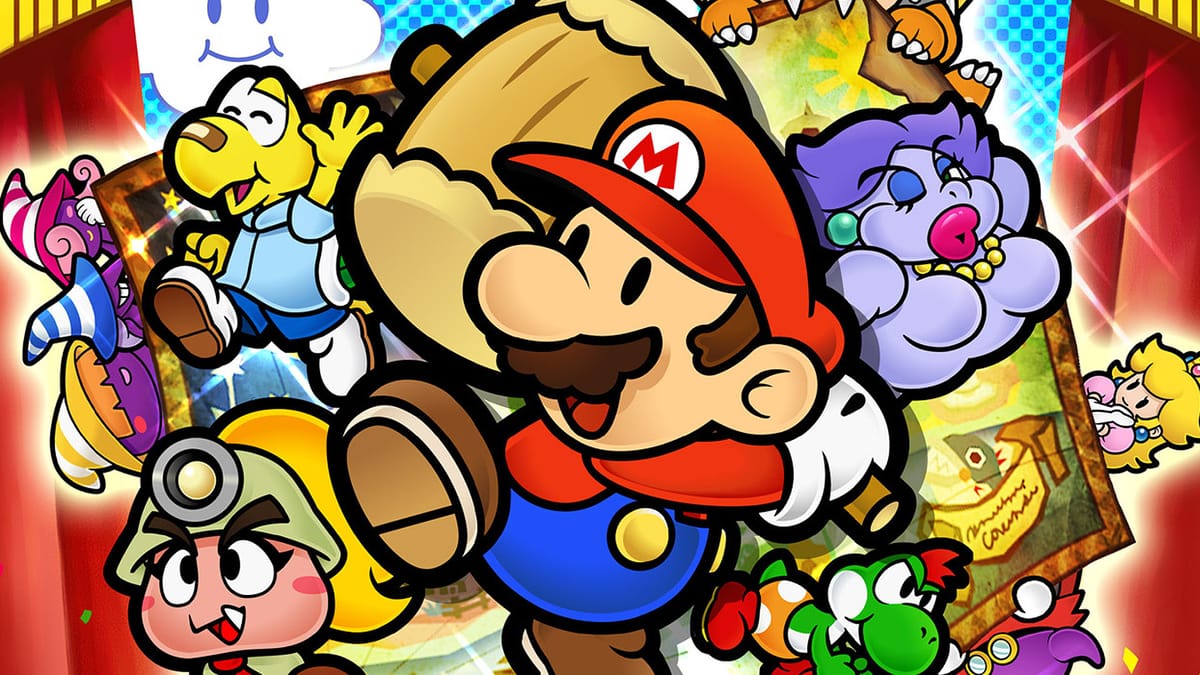
The year is 2004, the New England Patriots just won the superbowl, President Bush is running for re-election, and the Nintendo Gamecube is turning three years old since it’s release.
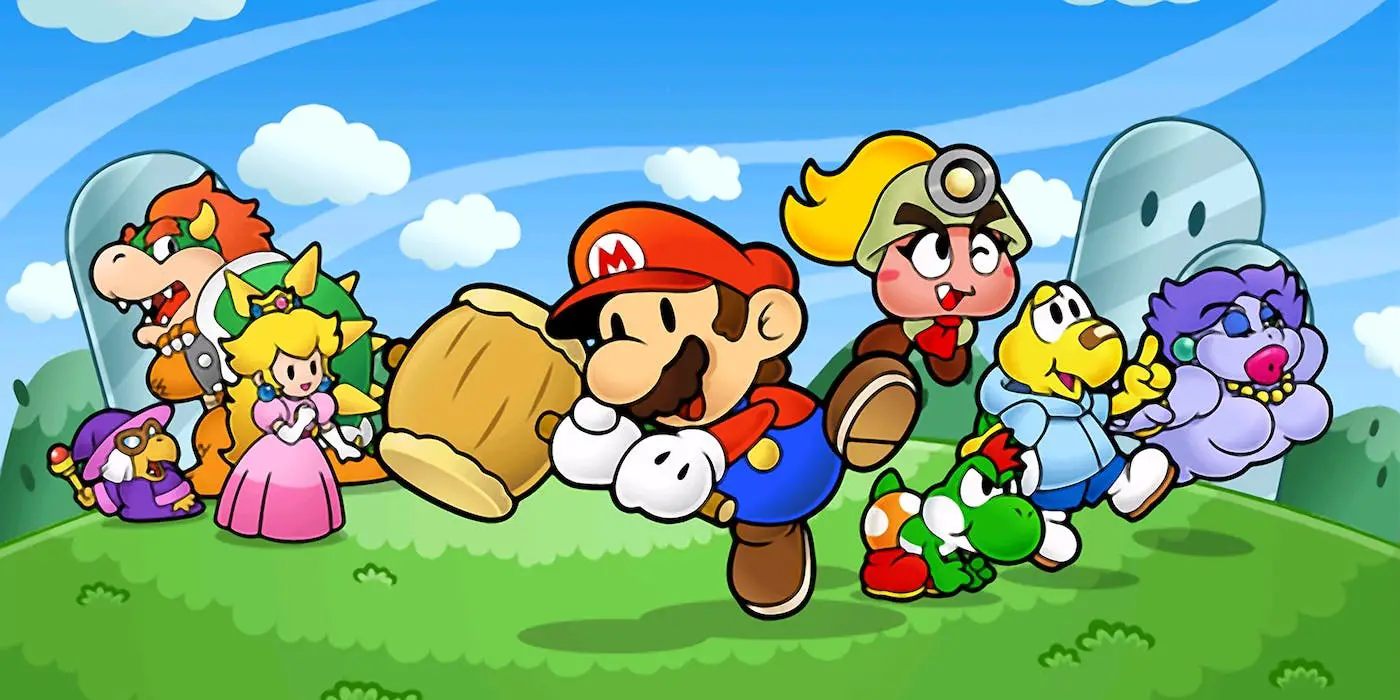
After running around in space with Metroid Prime, sailing the waters of Hyrule with The Legend Of Zelda: The Wind Waker, or smacking Luigi for a while in Super Smash Bros. Melee, our needs were met, and so, this little gem of a game got lost under those heavy hitters.
We all know Mario is no stranger to the RPG genre. Super Mario RPG: Legend Of The Seven Stars introduced us to a world where Mario didn’t have to necessarily stomp on things all day, a world with Health Points, a world with turned based combat! But such a world would have to wait a bit to be utilized in a fashion that only Nintendo could do.
So to our surprise, in 2000, Paper Mario was released for the Nintendo 64. From then, a new franchise was born, and even if Nintendo has treated such franchises questionably, back in 2004, the sequel to Paper Mario was about to hit the market. This is a review for Paper Mario: The Thousand-Year Door.
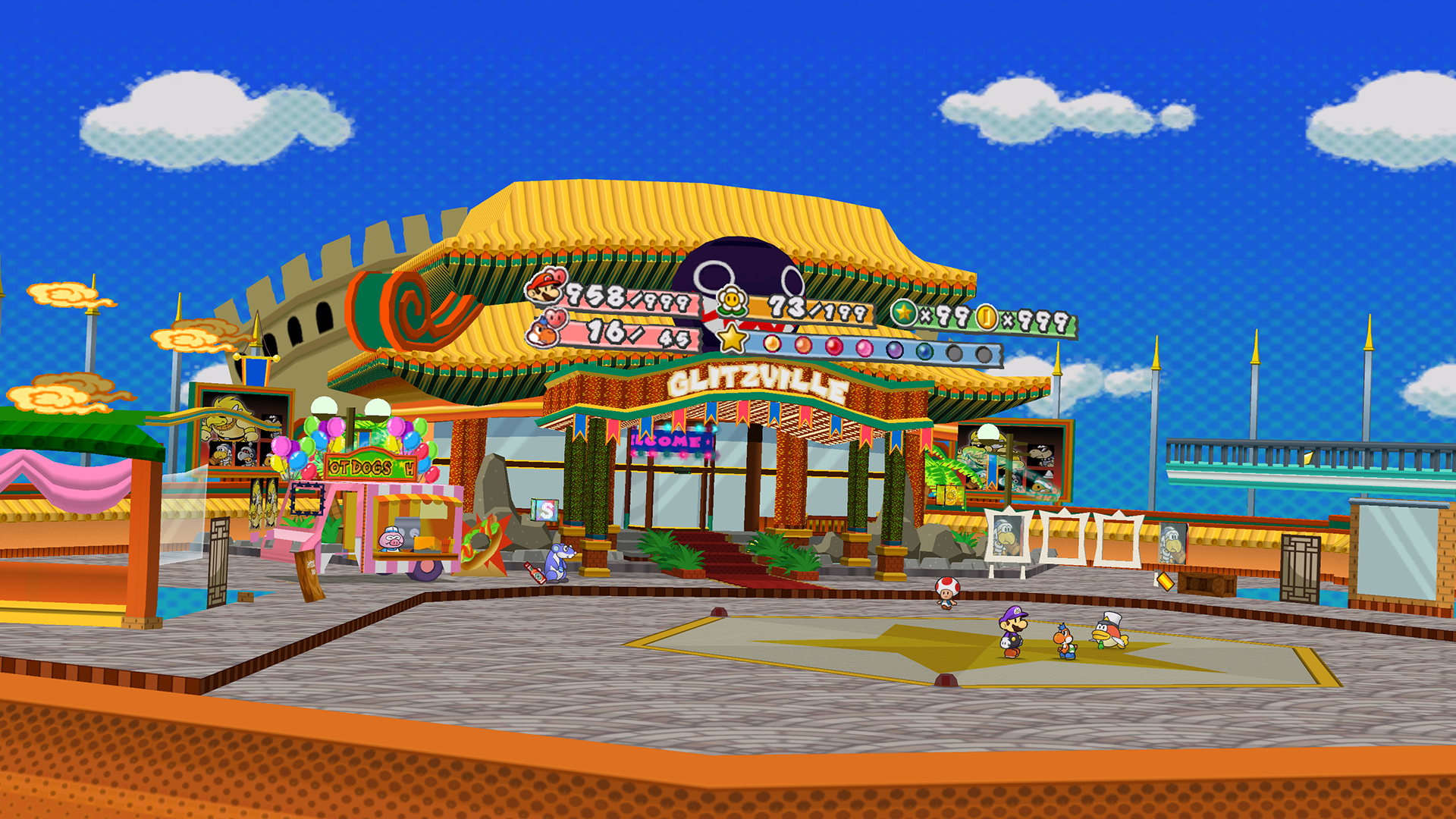
Once again, Princess Peach has gotten herself kidnapped… But this time I can’t really blame her. See, while on vacation in the infamous town of Rogueport, she stumbled upon a traveling merchant. This particular merchant was selling a map, a map leading to the treasure inside The Thousand-Year Door. Before getting captured, she writes a letter to Mario letting him know of what she had found, and so, our protagonist, the always trusty Mario, got into a boat and set sail for Rogueport. When he arrived, she was already gone…
Mario quickly befriends a local Goomba by the name of Gombella by rescuing her from some unsavory characters. From there, they quickly find themselves looking for the seven crystal stars in order to open the Thousand-Year Door and rescue Princess Peach. Along the way, more allies join the party such as Vivian or the old grump, Admiral Bobbery, amongst many. They fight Dragons, they fight the spirit of a death Pirate, they even fight themselves! From solving mysteries on a train at sunset, to becoming the king of champions on a wrestler arena, this is an adventure full of twists that will make you care for a computer! Even Peach has her own story, her own gameplay, much like she did on the original Paper Mario, yet this time, this time you might even shed a tear or two.
Mario, along with his new friends, must unravel the mystery of the Thousand-Year Door by traveling to distant lands and collecting the Crystal Stars, all to save Peach from a much more terrible fate than she has ever faced before.
In the original Paper Mario, we were able to fight the enemies that were on-screen. No random encounter, no unnecessary battling. This trend continues on The Thousand-Year Door. Most of the world will be blocked at first, showing you glimpses of all the little secrets you will be able to uncover once you progress far enough, which honestly is a little reminiscent of a Metroidvania, but then again, I wouldn’t be surprised if that was the idea. The studio behind The Thousand-Year Door is the same studio that created the first Metroid ever, Intelligent Studios, but I digress.
Rogueport will serve as a Hub Area, connecting each of the eight chapters to itself. From there, exploration will be heavily encouraged. The movement is simple, nothing too fancy or inventive, that is until you find your first Black Chest. This mysterious chests contain “Curses”, which is a funny term for having the ability to turn into a paper boat or a paper plane. Yes, you can explore while being a boat made out of Paper Mario. This adds a sense of not only progression, but ingenuity as well. While you explore the different lands of the Kingdom you will face many, many foes. Unlike more traditional RPG’s, the enemies are right there on the screen with you. They walk, they move, they hover or fly, and as soon as they make contact with you, or vice versa, the combat will begin.
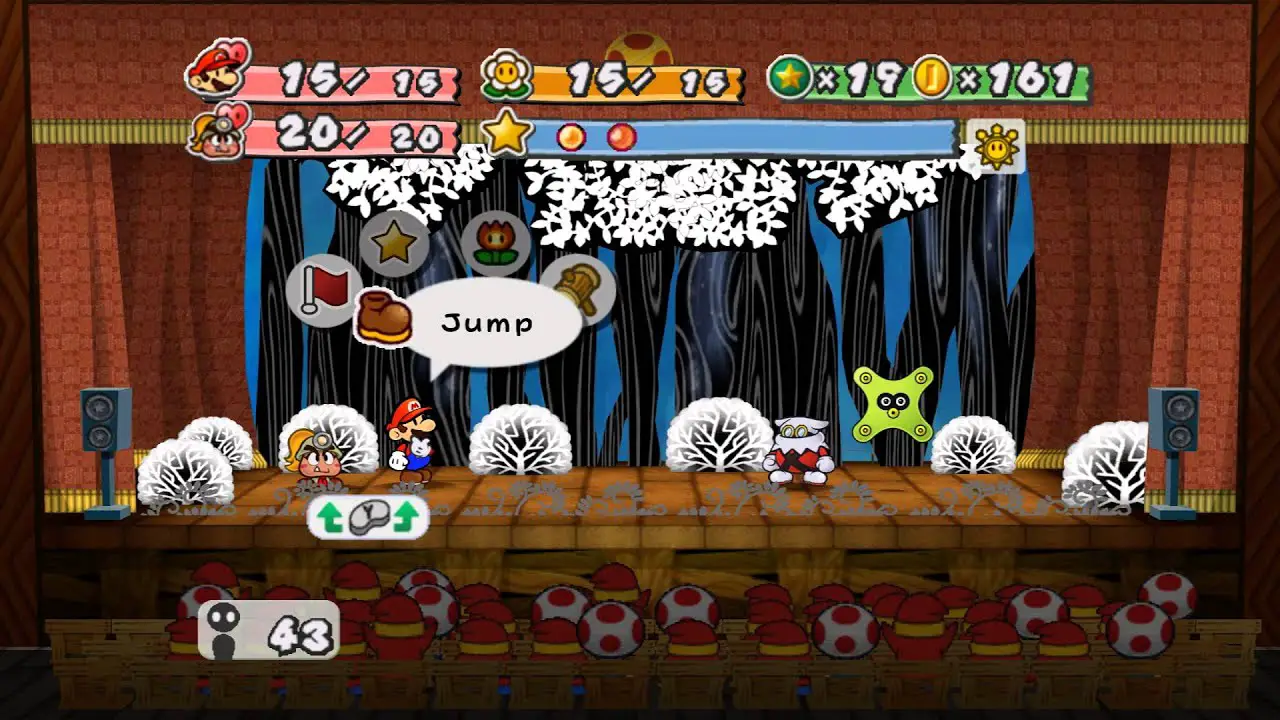
The combat is turn-based, like most RPG’s. The idea was to make it so that Mario would feel, well, like Mario. You have your hammer, your jump, and your partner. Back in the original Paper Mario, the partner did not have its own HP, they could simply attack, and if they were caught by any enemy attack, they would be useless for a few turns. Well, The Thousand-Year Door fixed that by giving each party member their own separate HP value, as well as the ability to have said partner be in front of Mario instead of always being behind Mario, thus giving more room for strategy. Some partners have very high HP, so in moments of peril, you can always change their position so that the attacks go to them instead of Mario.
Each battle you beat, you earn star points. Collect a hundred of those babies and you’ll level up. When you level up, you can choose to raise one of three stats. Health Points, Flower Points, or Battle Points.
Flower points are what allow you to do some of the more flashy moves. Each partner also gets flashy moves, they get two per upgrade, and this creates a really nice balance with exploring because if you want to upgrade a partner, you need to find three Shine Sprites that are hidden around the world. Now, how does Mario get those flashy moves? Well, for that we need to talk about the Battle Points and the Badges.
Each time Mario decides to level up his BP, or Battle Points, he acquires three little notches which he can use to equip a Badge. Badges are items that are scattered all across the Kingdom. These badges can go from having passive effects like adding more power to Mario, or boost his defense, to actually give him something to use, something flashy, something like the Fire Drive, which is a hammer that sends orbs of flames through the stage, or maybe like the Power Jump, which will always hit harder than a regular jump. These badges are what gives The Thousand-Year Door not only it’s strategic gameplay, but it’s replayability as well. You can choose to go for a more defensive stance, or a more offensive one. You can equip all the flashy moves, or maybe none of them. I personally always go for BP as fast as I can to go for an all offensive strategy. The badges that you can actually use in battle cost FP or Flower point to use, as do your partner’s special abilities, so you have to be mindful of that. That, along with the fact that each single attack that you do requires an action command to be performed perfectly, ends up creating a battle system that is not only incredibly versatile, but extremely fun, as well as gratifying. It incentives creativity while also provision a very well thought skill ceiling to master.
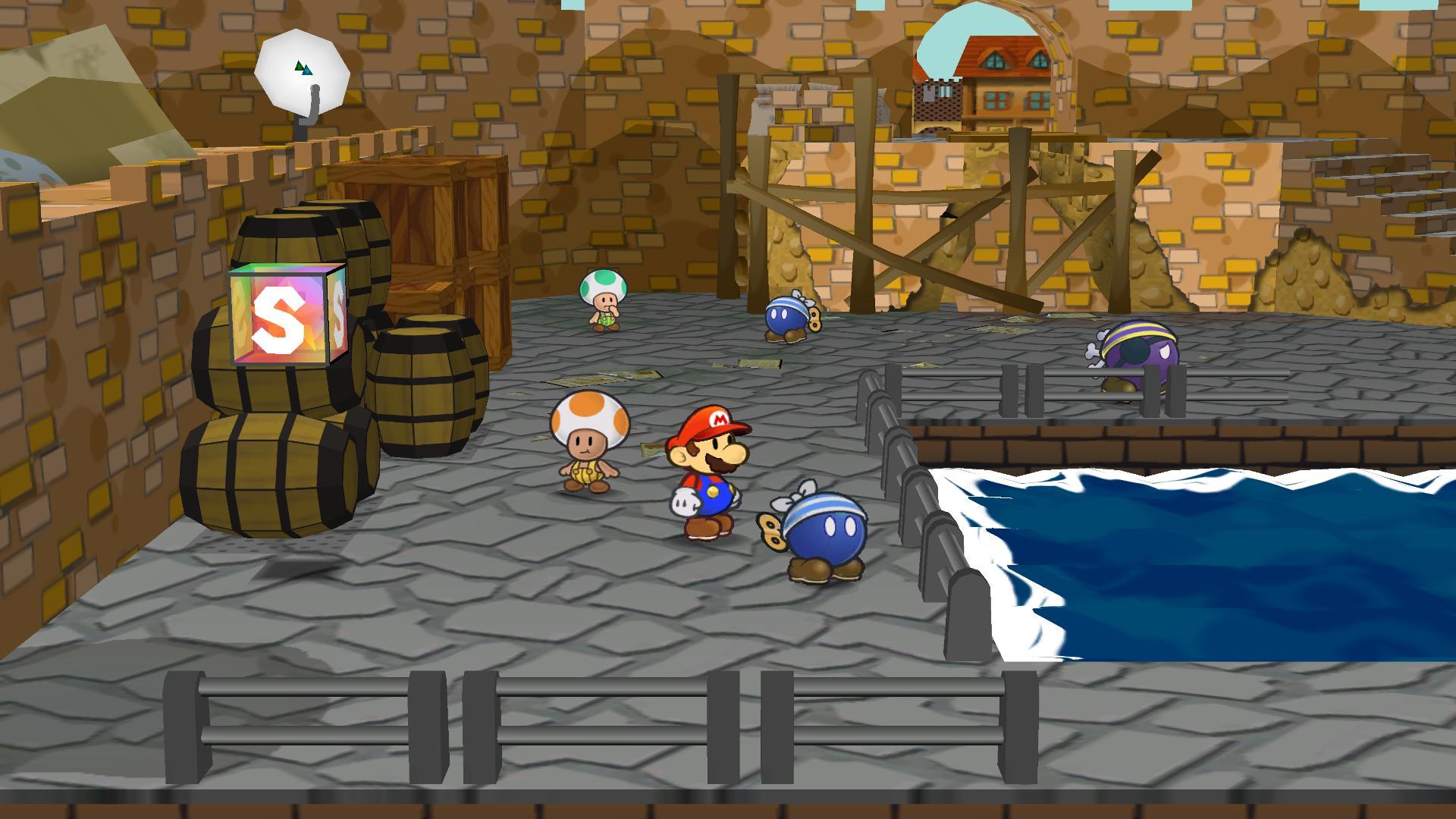
One last thing you need to know about the combat is that, for some reason, the developers decided that each battle would take place on a stage. Mario, the party, the enemies, they’re all performers in a way. Sometimes the audience will throw things to harm you, or maybe help you. Sometimes the stage itself will fall and cause a status effect on someone, can be Mario, can be an enemy, it’s all random.
Paper Mario: The Thousand-Year Door created a balance that is hard to find in RPG’s of those times. A balance between a truly enjoyable, non-repetitive combat, and a fulfilling exploration. Those two aspects, which end up being 80% of the game, are heavily intertwined with each other. That extra 20% comes from something that can be a little polarizing, it comes from the dialogue.
If you’re completely enamored by the sights, the characters, the story, then the dialogue isn’t gonna be too harsh on you, but if you’re having trouble being compelled by the setting of the game, then the dialogue is going to feel infernal. The game has a lot of dialogue, and I mean, that is something to be expected from an RPG, but let me tell you that this game can go a little overboard sometimes. Chapter six, which is extremely creative, is almost all dialogue. Some parts of the game will feel tedious, and that is completely understood. The length of the game also suffers a bit from this since the pacing can feel disconnected from the gameplay at some points, specifically with all the dialogue. Some moments of the game will be fight after fight, then other moments will be all dialogue. The game struggles balancing those two aspects in a consistent way, but in certain chapters it is done wonderfully.
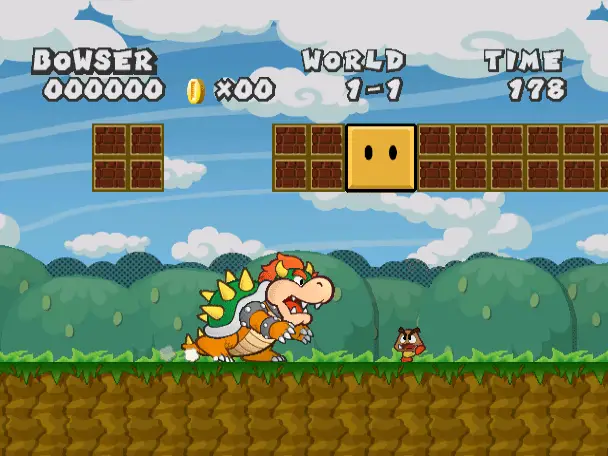
Finally, after each chapter you will play for a little bit as Peach, and as Bowser as well. Yep, Bowser is back, not as the villain but as the guy who really wants to be the villain. It’s actually hilarious. Those little moments with Peach and Bowser are just that, little moments. They add to the story, they add to the urgency of your quest, they give more life to an already life-brimming game. It’s like the cherry on top of the magnificent cake that is this game.
This is an area where the game gets complained about a lot. See, the name of the game has the word paper in it, and a lot of people were disappointed that the world was not very paper like. Things weren’t all made out of paper like the last few Mario Paper games have been, newer games like Origami King or Color Splash. Personally, I don’t think it takes away anything from the presentation. I think the graphics have aged phenomenally, and honestly, with the music, which is amazing, every little corner of the world feels unique. Rogueport, Petal Meadows, The Underground, it all feels like it’s own little universe, and the fact that it’s all interconnected just makes it feel more alive, more immersive. I have to agree that maybe they forgot about the paper side for some of the game, but again, it is my belief that it does not hinder the experience one bit.
Like I said, the graphics do still stand today, after seventeen years. It just looks good. Going cartoonish has its perks, and this game is the embodiment of that perk. Timelessness.
The music is just fantastic as well. From the moment you start the game and you hear that faintly yet growing melody, it just starts to wrap you around the story, around the game itself. I think this game is presented in such a creative way. From the chapters, which honestly are so incredibly well thought out, each having its own little quirk, to how the music and characters interact with whatever environment you find yourself in. It creates a sense of great adventure, of mystery, of urgency, of loss, of home.
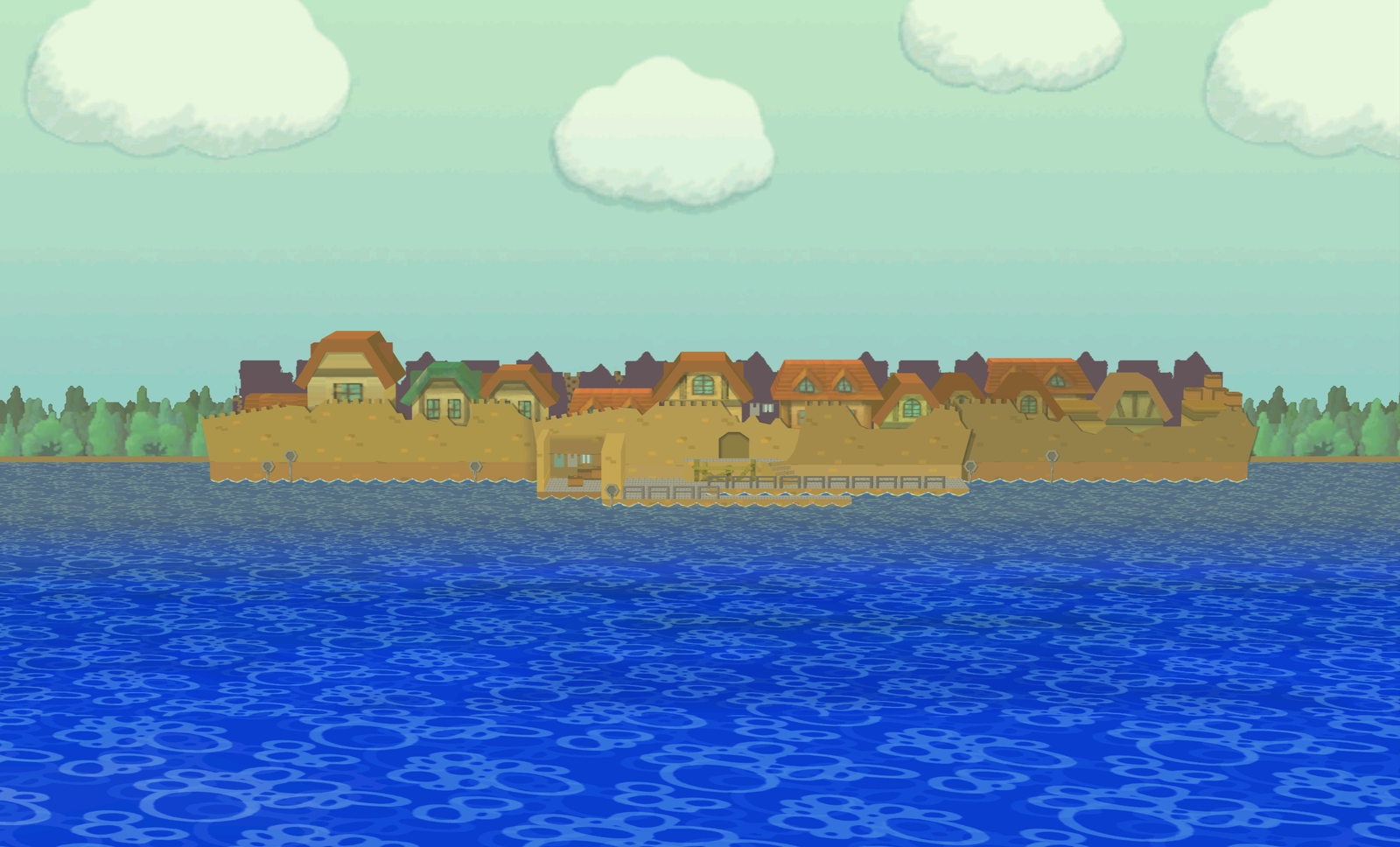
Games like this are quite rare, and sometimes they get overlooked. In 2004, Intelligent Studios created a story where Peach isn’t just stranded on a castle having the most awkward time of her life, but a story where Peach’s life is an actual danger, where she finds a friend amongst enemies, hope where hope is gone from. They created a game where I can look at Mario and think to myself, “Man, that is a true hero right there”. Because when you’re done with it, and you’re shown everything you did, every life you touched during your adventure, it all becomes real, and it becomes an adventure that stays with you, a world that you miss when you’re not there. It becomes familiar, exciting, and honestly, just straight up fun. Sure, the game is not perfect. It struggles with it’s pacing, and even though it strikes a very unlikely balance between exploration, combat, and story, it is not consistent enough to be as enjoyable on subsequent play-throughs.
I think this game is a perfect example of what an RPG should strive for, and for all intents and purposes, Intelligent Studios made a marvelous work with a very odd franchise.
Mario Paper: The Thousand-Year Door
Great
Mario paper is a game full of heart and passion poured into it. This is a game that will try its hardest to make you love it without trying too hard, and when it goes for your heart, trust me when I say that it will succeed in taping into it.
Pros
- Strategic and creative gameplay
- Compelling and heartfelt plot
- Marvelous world-building
Cons
- Short length
- Pacing and balance between dialogue/gameplay
